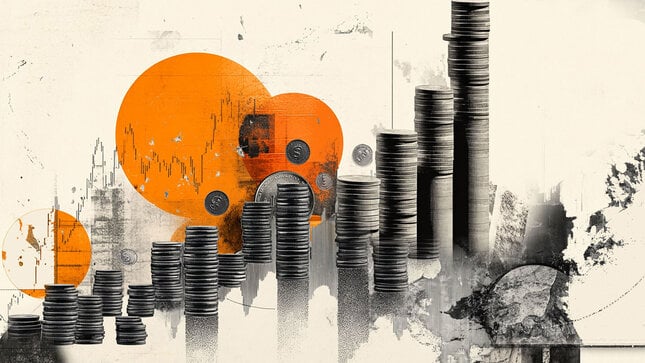Hello traders! In a previous Lessons From the Pros newsletter I briefly mentioned that I have a written out trading routine, a “to do” list if you will. Because of the numerous requests for this routine, I’ve decided to give out this list, edited a bit for reasons you will read later.
First of all, why have a written out routine? So I don’t forget anything, of course! As usual, I’ll use a driving analogy for why this is important. When you first got into a car for Driver’s Ed, or when one of your parents showed you how to drive, did you have a list of things to do before you put the car in drive and took off? I know I did. For example, adjusting the seat and steering wheel to fit me, then the mirrors, then seatbelt, foot on the brake, look around, then foot on the gas. Simple enough. At first I had to be conscious of and think about each individual step to do before I left the parking space. After 30 plus years of driving, it is now such a habit that I don’t have to think about doing these things, they just happen naturally. The same thing could be said about my trading routine. So class, here is the basic to do list, including a few reasons as to why you should do them:
- Check yourself. If I’m not physically and psychologically at 100%, I don’t trade. I must assume that everyone I am competing with is at 100%, and I would prefer to not be a donor today. If I feel sick, I have no problem taking a trading day off.
- Check balances. Make sure my buying power is correct, also calculate what my risk management dollar value should be. If my risk management rules allow a 1% loss per trade, I need to know what my position size should be based on the stop loss my trades need.
- Check any orders and positions. If there is a position in my account on the EURUSD, I’ll check that pair first. Do I need to move my stop, perhaps move my profit target further out (managing my trade). If there are no positions, but orders out there to enter a trade, I will check that pair next. If I am trying to enter a USDCAD trade and a major bit of news is coming out in three hours, perhaps I will re-evaluate that order. Sometimes I will cancel the order, sometimes leave it alone, depends on the news and charts.
- Check the economic calendar. Any big news today? This may lead me to avoid certain currency pairs for the time being, or even focus on some. Depends on how important the news event is and the reaction to the news.
- Check commodity prices. Usually I am looking at gold, oil, and copper. In class we discuss which currency pairs are currently most affected by these commodities. Looking at these commodities can help with both trading ideas, and also trade management.
- Check the dollar index. Gives me an idea if I should be biased to going long or short the US dollar.
- Check my longer term charts of the currencies I am most interested in. As stated in a previous newsletter, I focus first on the pairs that have the highest ATR (Average True Range). If the shape of the chart looks right, then I…
- Check my intermediate charts for high quality supply and demand zones. High quality means the zones score out well enough with our Odds Enhancers for me to take a trade at the zone. If the score isn’t high enough, I won’t enter a trade at the particular zone. I might use the zone for an exit, but not an entry. On this step is also where I will “mark-up” my charts with zones.
- Buy, sell, or wait? If my currency pairs aren’t in or near a zone, I must wait. If the pair(s) are in a zone, time to trade!
- Place trade according to my risk management rules for position size.
- Double check that my stop loss and profit target orders are where I want them to be. Don’t forget, we recommend at least a 3:1 reward to risk ratio!
- Look for new trades
- Manage any positions that I have. Again, this means moving my stop loss in the right direction, possibly moving profit targets further out, perhaps even scaling out of part of a position if the conditions are correct
- Check any open orders and positions again. Is there anything on the economic calendar that would make me not want to hold a particular position overnight, or even to enter a position while I’m asleep? Are my stops and profit targets in the proper places?
- Play the Hard Right Edge Game on any trades that I placed today. As has been mentioned in previous articles, this version of the game entails turning on your order history so the charts show you where you entered and exited your positions. Scroll the chart back in time so you can’t see what you did, then move forward candle by candle until the charts show you where your entries and exits where. Did you trade properly, meaning you bought when price pulled back to demand, and sold when price rallied to supply? If you find yourself buying after a sharp rally or selling after a sharp decline, you are probably losing money. Playing this game on your completed trades will show you what you are doing wrong. It can also help show you if your exits are good, or if you are leaving many pips on the table.
Last but not least, this list is geared a bit to day trading. Swing and position traders will have to adjust the frequency of some of the things on the list to make sense to their trading style. Hope this list helps!
Some of these steps are left intentionally vague. It wouldn’t be fair to our students to give out every single specific thing on my list. In addition, there was no mention of a trade journal. We do expect you to keep track of your trades, but that is up to the trader as to when and what to put into that very important document.
This content is intended to provide educational information only. This information should not be construed as individual or customized legal, tax, financial or investment services. As each individual's situation is unique, a qualified professional should be consulted before making legal, tax, financial and investment decisions. The educational information provided in this article does not comprise any course or a part of any course that may be used as an educational credit for any certification purpose and will not prepare any User to be accredited for any licenses in any industry and will not prepare any User to get a job. Reproduced by permission from OTAcademy.com click here for Terms of Use: https://www.otacademy.com/about/terms
Editors’ Picks

Gold not done with record highs
Gold extends its rally in the American session on Monday and trades at a new all-time-high above $4,420, gaining nearly 2% on a daily basis. The potential for a re-escalation of the tensions in the Middle East on news of Israel planning to attack Iran allows Gold to capitalize on safe-haven flows.

EUR/USD gathers recovery momentum, trades near 1.1750
Following the correction seen in the second half of the previous week, EUR/USD gathers bullish momentum and trades in positive territory near 1.1750. The US Dollar (USD) struggles to attract buyers and supports the pair as investors await Tuesday's GDP data ahead of the Christmas holiday.

GBP/USD rises toward 1.3450 on renewed USD weakness
GBP/USD turns north on Monday and avances to the 1.3450 region. The US Dollar (USD) stays on the back foot to begin the new week as investors adjust their positions before tomorrow's third-quarter growth data, helping the pair stretch higher.

Top 10 crypto predictions for 2026: Institutional demand and big banks could lift Bitcoin
Bitcoin could hit record highs in 2026, according to Grayscale and top crypto asset managers. Institutional demand and digital-asset treasury companies set to catalyze gains in Bitcoin.

Ten questions that matter going into 2026
2026 may be less about a neat “base case” and more about a regime shift—the market can reprice what matters most (growth, inflation, fiscal, geopolitics, concentration). The biggest trap is false comfort: the same trades can look defensive… right up until they become crowded.
RECOMMENDED LESSONS
Making money in forex is easy if you know how the bankers trade!
I’m often mystified in my educational forex articles why so many traders struggle to make consistent money out of forex trading. The answer has more to do with what they don’t know than what they do know. After working in investment banks for 20 years many of which were as a Chief trader its second knowledge how to extract cash out of the market.
5 Forex News Events You Need To Know
In the fast moving world of currency markets where huge moves can seemingly come from nowhere, it is extremely important for new traders to learn about the various economic indicators and forex news events and releases that shape the markets. Indeed, quickly getting a handle on which data to look out for, what it means, and how to trade it can see new traders quickly become far more profitable and sets up the road to long term success.
Top 10 Chart Patterns Every Trader Should Know
Chart patterns are one of the most effective trading tools for a trader. They are pure price-action, and form on the basis of underlying buying and selling pressure. Chart patterns have a proven track-record, and traders use them to identify continuation or reversal signals, to open positions and identify price targets.
7 Ways to Avoid Forex Scams
The forex industry is recently seeing more and more scams. Here are 7 ways to avoid losing your money in such scams: Forex scams are becoming frequent. Michael Greenberg reports on luxurious expenses, including a submarine bought from the money taken from forex traders. Here’s another report of a forex fraud. So, how can we avoid falling in such forex scams?
What Are the 10 Fatal Mistakes Traders Make
Trading is exciting. Trading is hard. Trading is extremely hard. Some say that it takes more than 10,000 hours to master. Others believe that trading is the way to quick riches. They might be both wrong. What is important to know that no matter how experienced you are, mistakes will be part of the trading process.
The challenge: Timing the market and trader psychology
Successful trading often comes down to timing – entering and exiting trades at the right moments. Yet timing the market is notoriously difficult, largely because human psychology can derail even the best plans. Two powerful emotions in particular – fear and greed – tend to drive trading decisions off course.

